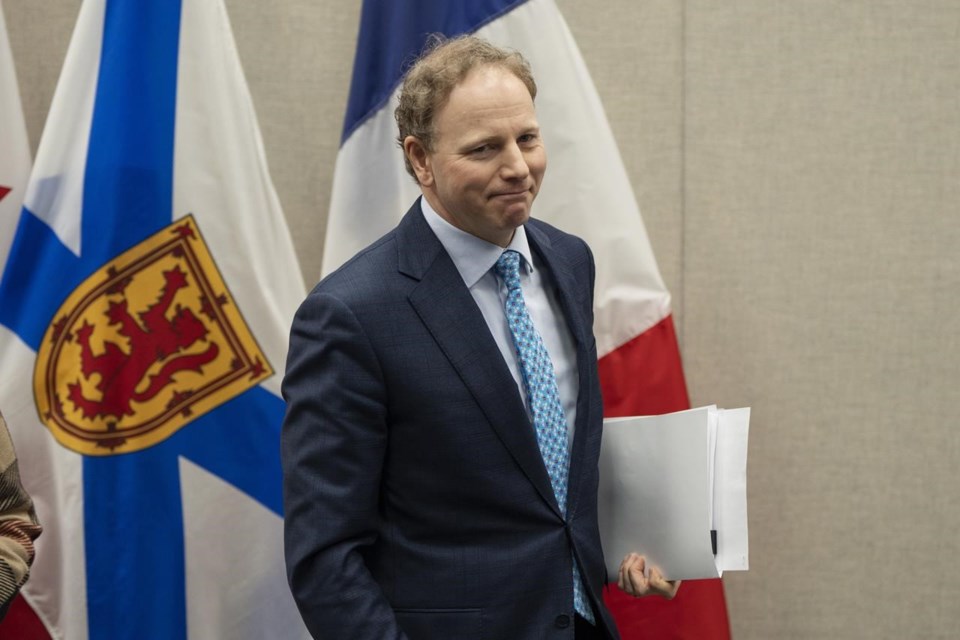HALIFAX — A half-billion-dollar deficit forecast in last year’s Nova Scotia budget turned into a $115.7-million surplus, as the province closed the books on the previous fiscal year that ended March 31.
The surplus figure is $621.9 million higher than the $506.2-million deficit estimated when the government tabled its budget in March 2022.
The large swing in fiscal fortune was mainly due to the province’s growing population and an economy that rebounded from COVID-19 restrictions, Finance Minister Allan MacMaster said Tuesday.
Those factors increased government revenue from the budget estimate by $2 billion — to $15.6 billion — due to more money collected from personal and corporate income taxes, federal transfers and province-owned businesses.
“Our province experienced faster population growth than expected,” MacMaster told reporters. The population increased by 38,000 people from January 2022 to January 2023, the minister said.
MacMaster said economic pressures caused by inflation saw spending increase to $15.5 billion, a figure that includes a record $1.7 billion in additional spending. The extra spending, known as additional appropriations, is money approved by cabinet, not the legislature, and that wasn't included in the budget.
MacMaster made no apologies for the extra spending, which escaped scrutiny by the opposition parties.
“Despite our best efforts we were not able to predict the amounts of revenues that came into the province,” he said. “They were spent on targeted support for people most in need and on things like housing. It allowed us to do some of those things more quickly.”
Most of the 1.7 billion was spent during the spring, and went to economic support programs, along with student loans and bursaries. About $68 million was allocated for future obligations for such things as aging government buildings that may need to be cleared of asbestos. About $4.3 million was spent on post-tropical storm Fiona cleanup costs and relief programs.
Liberal Leader Zach Churchill said that with the better-than-expected financial situation the government should consider giving Nova Scotians an income tax cut to help them deal with the cost of living.
“This would also be a good time to increase the rates for income assistance ... to at least keep pace with inflation,” Churchill said, noting that those rates have remained frozen for the last two years.
NDP Leader Claudia Chender was critical of the size of the extra appropriations and said more of that type of spending should be subject to legislative oversight. One way to do that, she said, is to make the House of Assembly sit for longer than it currently does.
“I think that they (government) want to do whatever they want with the money that they get … and they don’t want to have to answer for it,” Chender said. “Nova Scotians should be very concerned about that.”
Meanwhile, the province’s net debt stood at $17.8 billion at the end of the fiscal year. Finance Department officials said the surplus for 2022-23 would go toward the debt.
This report by The Canadian Press was first published Sept. 12, 2023.
Keith Doucette, The Canadian Press



